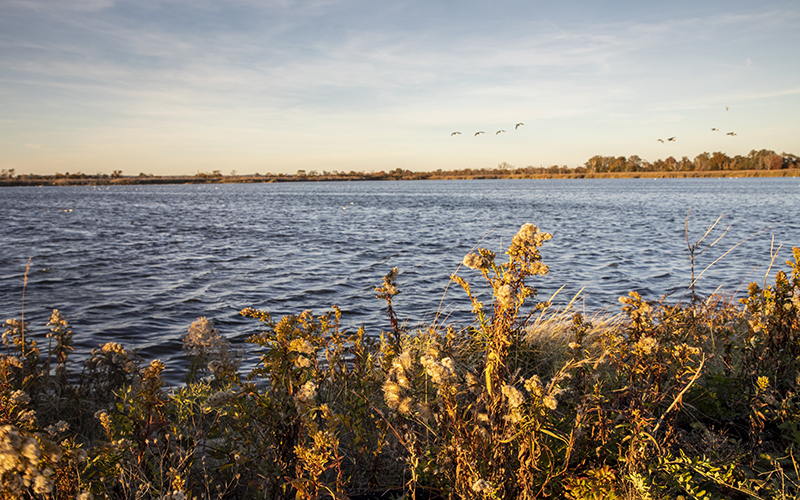The American Society of Landscape Architects Calls on National Governments to Commit to 30 x 2030 and the Global Goal for Nature: Nature Positive by 2030
 ASLA 2022 West Pond: Living Shoreline. Brooklyn and Queens, New York. Dirtworks Landscape Architecture P.C / Jean Schwarzwalder/DEP
ASLA 2022 West Pond: Living Shoreline. Brooklyn and Queens, New York. Dirtworks Landscape Architecture P.C / Jean Schwarzwalder/DEPThe American Society of Landscape Architects (ASLA) urges national governments at the Convention on Biological Diversity (CBD) COP15 in Montréal, Canada, to commit to far more ambitious global conservation and biodiversity goals, including protecting at least 30 percent of terrestrial, coastal, and marine ecosystems by 2030 (30 x 2030).
In advance of the CBD COP15, ASLA has also joined 340 organizations worldwide in signing the Global Goal for Nature: Nature Positive by 2030. The Call to Action calls for “improving the state of nature by 2030; ensuring rights-based approaches to nature-based solutions and to conserving effectively and equitably 30 percent of land, freshwater, and seas by 2030; and directly tackling the drivers of nature loss,” among other goals.
“In our recently released Climate Action Plan, ASLA identified the connections between climate change and biodiversity loss. We made a clear commitment to advance 30 x 2030. We also called on all landscape architecture projects to restore ecosystems and protect biodiversity on a global scale by 2040 – and we call on national governments to be equally as bold,” said ASLA CEO Torey Carter-Conneen.
“In Montréal, now is the time for a global agreement to address the biodiversity crisis and increase protections for nature. Biodiversity underpins all natural systems on Earth. Protecting our remaining biodiversity and bolstering and restoring ecosystems are critical to our long-term survival,” said ASLA President Emily O’Mahoney, FASLA.
According to the United Nations, one-million animal and plant species are now threatened with extinction, and seventy-five percent of the Earth’s ice-free land surface and two-thirds of the oceans have been significantly altered by humanity.
ASLA and its members understand there is both a biodiversity crisis and a climate crisis, and they are interconnected:
- A changing climate is resulting in sea level rise, extreme heat, increased flooding, and drought, which impacts both human communities and non-human species.
- Biodiversity loss is largely driven by unsustainable agricultural practices, sprawl, and habitat fragmentation, but climate change is accelerating the alteration of habitats and species migration, which increases extinction risks for species.
- Biodiversity loss and ecosystem degradation undermine the natural systems humanity relies on to provide a range of critical ecosystem services, including nature-based approaches to sequestering carbon and adapting to climate impacts.
“Landscape architects are uniquely qualified to plan denser communities and protect natural areas, combating the sprawl that threatens remaining ecosystems and biodiversity hotspots. We can also increase biodiversity through the incorporation of native tree and plant species, planning and designing habitat connections and corridors, and restoring degraded ecosystems – all of which have important climate benefits as well,” said O’Mahoney.
Given the failure of the global community to meet the 2020 Aichi biodiversity targets, ASLA calls on national governments to significantly increase investment and support for conservation, habitat defragmentation and connection, and ecosystem restoration over the next decade.